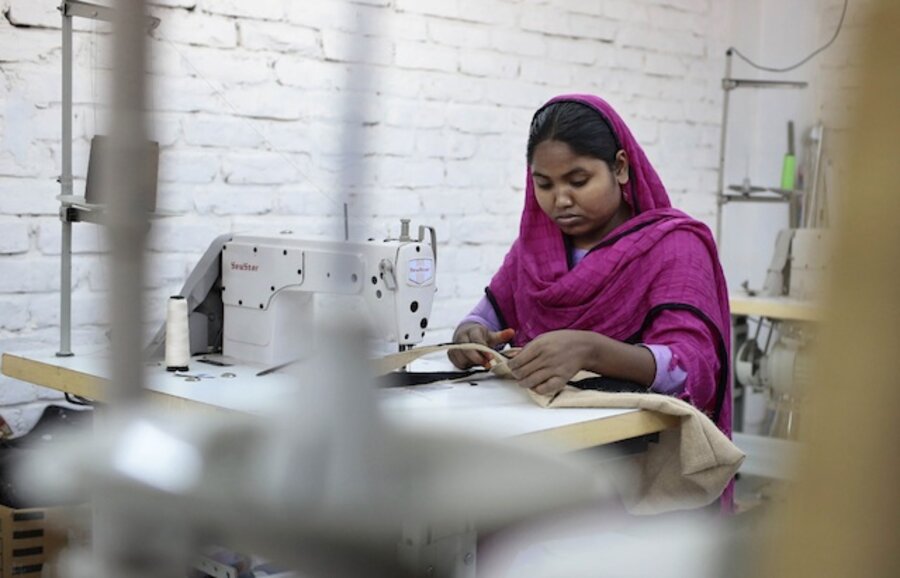Why Bangladesh's Rana Plaza survivors are back at work
Loading...
| Dhaka, Bangladesh
As Yasmin Khatun lay in a hospital bed last April, she was overwhelmed with memories of being trapped under concrete slabs for 16 hours in the collapsed Rana Plaza garment factory. She was pulled alive from a disaster that killed at least 1,130 workers exactly one year ago.
Ms. Khatun initially vowed never to return to a garment factory. Eight months later she took a job with another factory, stitching pants. She still suffers back pains on busy, stressful days at work, but as a single mother she needs the job to provide for her young daughter.
“I cannot sit back if I want to make her life better,” says Khatun, who spent one and a half months in hospital after the building collapse in Dhaka, which drew global attention to lax safety standards in factories where many Western brand-name clothes are made.
Like Yasmin, many workers have overcome their fears of a repeat of the Rana Plaza disaster and continue to work in the garment industry. While Bangladesh has made progress on improving labor conditions – three separate safety initiatives have been started in the past year – questions remain over factory accountability and worker compensation.
One of those workers is Ruma, a sewing operator for the past nine years at the Four Wings factory in Dhaka. On April 12, Bangladesh’s labor ministry ordered the factory to close because it was holding more weight than its structure allowed, so Ruma, who goes by one name, is staying home.
The factory's suspension followed an inspection by the Accord on Fire and Building Safety – an initiative of mostly European retailers and trade unions that was created after the Rana Plaza collapse.
However, Ruma is not aware of the inspectors' findings. The Four Wing's management has declared a holiday for its 1,000 workers, who are due to return to work on April 27.
“We don’t know if the factory would close down completely. They have to pay our wages if they close the factory,” says Ruma, whose earnings help support her parents and the education of two younger sisters.
Efforts at reform
Three separate initiatives were launched last year to look into the safety standards of factories. The Alliance for Bangladesh Worker Safety is a coalition of 26 North American retailers including Gap and Walmart, which monitors 640 factories. The Accord is made up of over 100 brands, including PVH Corp and Primark, and is inspecting 1,600 factories. The Bangladeshi government, supported by the International Labor Organization, will look into another 1,300 factories not covered by the Accord or the Alliance.
The main difference between the initiatives is that the Accord is a legally binding agreement between retailers, labor organizations, and nongovernmental organizations to improve working standards, while the Alliance is voluntary.
Since January, the Bangladeshi government has closed at least 13 factories – 10 on the recommendation of the Accord – for major structural faults. No factories were closed before January. Out of 400 factories inspected in the last month, 95 percent did not have a suitable fire escape.
Another challenge is a lack of compensation for the survivors and family members of those killed in last April's collapse. The Rana Plaza Donor Trust Fund has raised $20 million of its $40 million target, but many of the foreign brands that sourced from factories inside Rana Plaza have yet to contribute.
Khatun, the single mother who went back to work, says that she has not received any compensation for the time she missed while in the hospital, or for her physical ailment.
A recent survey by ActionAid, an international humanitarian organization, found that two-thirds of the survivors and family members of the deceased struggle to meet their daily needs. The NGO interviewed 1,436 survivors and 786 family members of the deceased and found 74 percent of survivors had not returned to work due to physical ailment, trauma, or their employers’ unwillingness.






